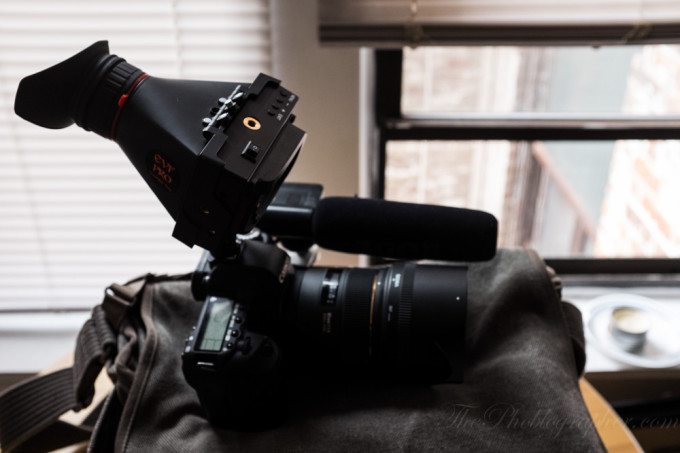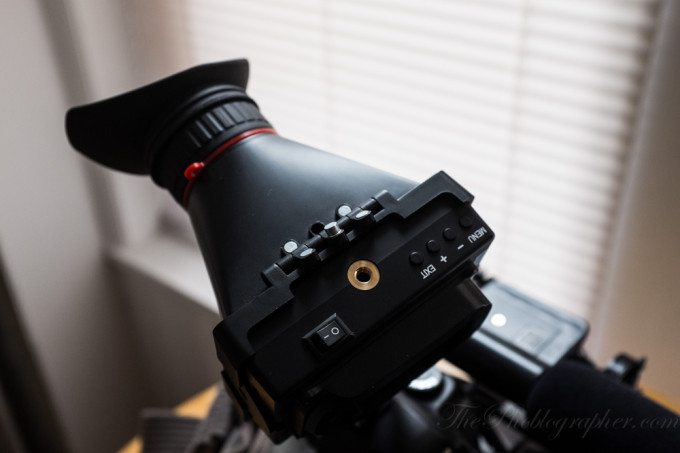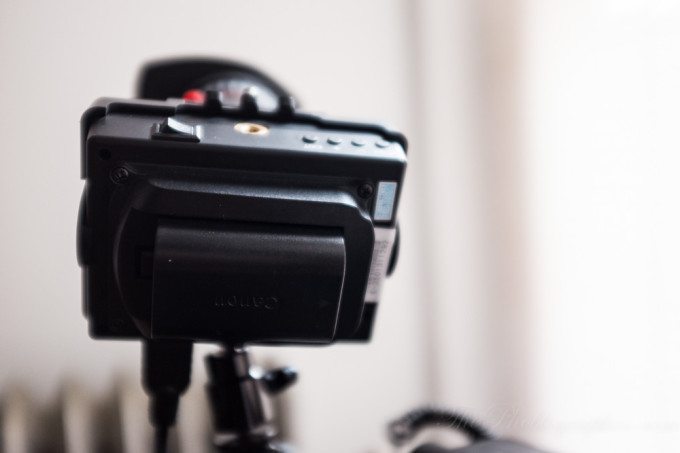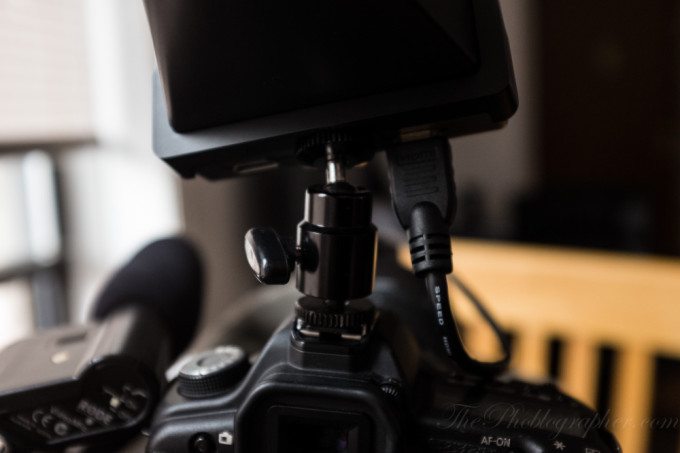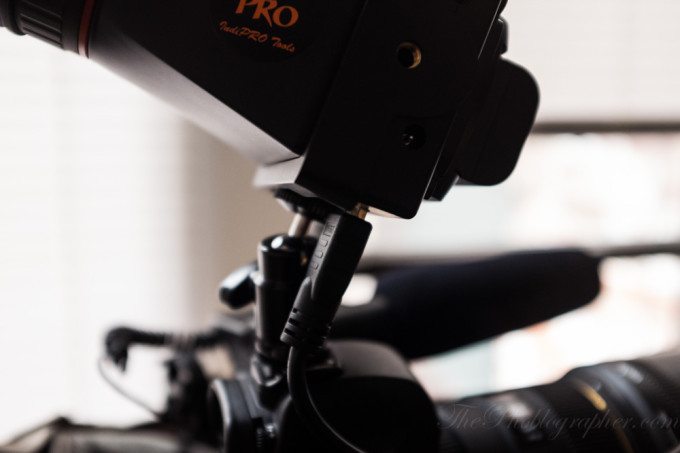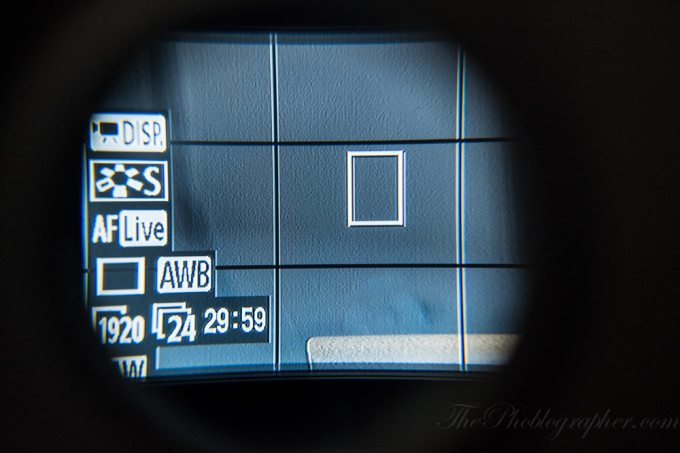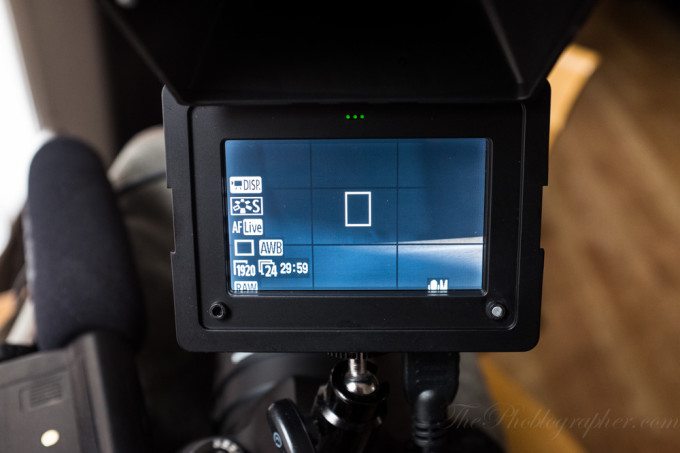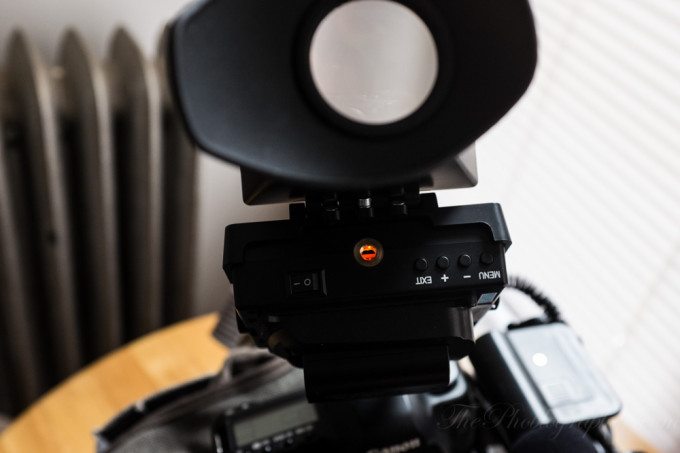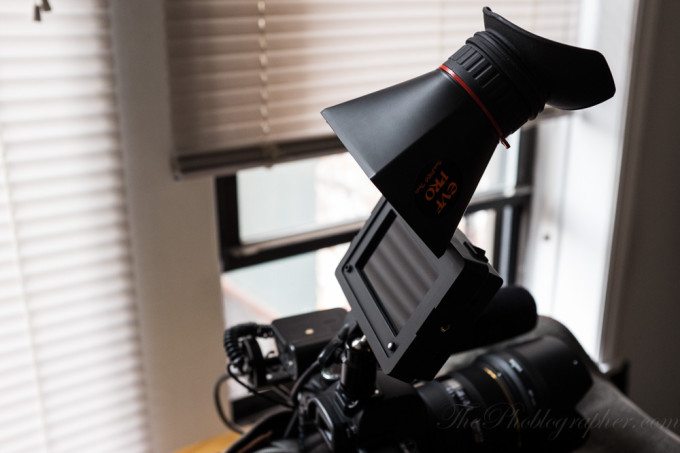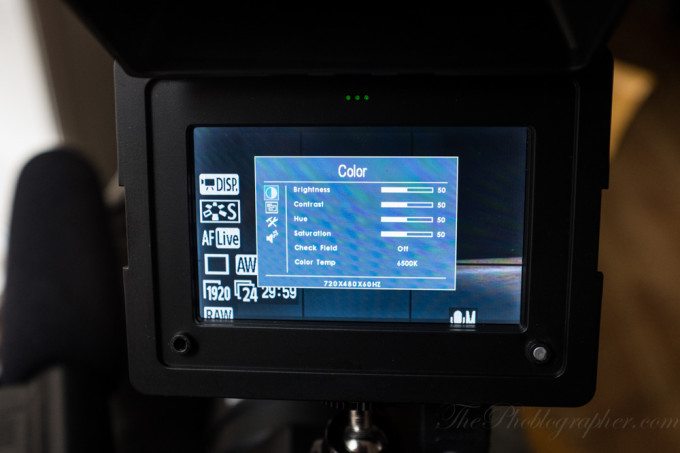We’ve been testing the IndiPro EVF for a couple of months for various different shoots. The company touts their new EVF as a more affordable solution for Indie videographers, news gatherers, and for those that need something portable. The specific version that we tested is marketed as being best for Canon DSLRs. However, during our tests we used it with the Sony NEX 5R in addition to the Canon 5D Mk II. And the results–we really can’t complain.
Editor’s Note: IndiPro is a current advertiser on this site. But never let some money that helps to pay our server bill cloud our judgement. We hold ourselves to higher ethics than that.
Pros and Cons
Pros
– Fairly portable
– Excellent display quality
– The menus give you all that you need
– Runs on Canon batteries
Cons
– Eats Canon batteries like a hungry zombie baby
– the buttons can be a bit tough to work with and master
Gear Used
For this review, we used the IndiPro EVF, Canon 5D Mk II, Sigma 35mm f1.4 EX, Sony NEX 5R, Rokinon 24mm T1.5, and the Vello multifunctional ballhead.
Tech Specs
Taken from the B&H Photo listing
- 3.5″ Display with 800 x 480 Resolution
- Flip-up Viewfinder with Diopter
- HDMI Input and HDMI Loop Through
- Supports 16:9 and 4:3 Aspect Ratios
- Frame Guides and Center Marks
- Peaking Focus Assist
- R/G/B and Monochrome Modes
- DC Power Input
Ergonomics
The IndiPro EVF is an interestingly built beast. On the top you’ll see the menu buttons, controls, on/off switch, a 1/4 20″ slot, and the hinges for the diopter area. The hinges for the actual optical part are also very well built.
To power the EVF, you’ll need to use Canon batteries. These are the standard batteries that work in the Canon 5D Mk II and Mk III. If you already have lots of those, then you’ll have no need to purchase more–unless you plan on really using this thing a ton.
One of the only things that I’m not happy about is the fact that the EVF doesn’t come with its own arm to mount it into a hot shoe of any sort. For this, I used the option from Vello–which seemed to work well enough. This allowed for enough room to plug our HDMI cables into the bottom without much fuss.
To work with the Canon 5D Mk II, you’ll need to use an HDMI cable. Ensure that it is properly and securely placed into the HDMI In slot because there are two: in and out.
This is what it looks like when you look through the EVF–for the most part. The optical unit has a diopter to work with your vision but it can sometimes cut off the edges depending on how you calibrate it.
Otherwise, you can just use the screen without the optical unit by just flipping it up. This works quite well in real life but as well all know, holding a viewfinder up to your body can help to provide for more stable footage if you’re not using a stabilizer. The option shown above though works great if you’re shooting from the hip.
When the unit is flipped up, it will stop at a certain point so as not to block the menu button functions–and that’s really useful.
Build Quality
Overall, the unit has a very solid feeling. With a secure arm, I feel like this can come out with me to tackle serious news coverage–which I feel that this unit is best suited for. Just ensure to take it off if you’re heading out into the rain or heavy precipitation. Though your camera might be able to handle it, this unit can’t.
We’ve used it for some short videos made around the apartment and some other projects, and we liked the compact size mixed in with the quality of the output.
Ease of Use
The menus of this unit are very clear cut and straight forward. However, navigating through them using the buttons can be a pain to do because the buttons aren’t exactly the most intuitive. They are very smartly placed though.
In the Real World
Though not every videographer will mount these units in the hot shoe like I did, I felt that using this unit was quite comfortable and similar to using a TLR film camera and shooting from the hip. It ate through the batteries, but otherwise I never really had any issues except that when using it with Sony cameras, the peaking won’t translate over. Typically as we all know though, that’s usually more of a Sony based problem than any other manufacturer.
Every year we shoot the annual NYC Pillow Fight. And if you want to shoot something that chaotic, just be sure that this thing is really bolted down tightly using a good arm. It can surely take the pillow swings, but it may get knocked out of place unless you’re using a good support system.
Conclusions
If you’re looking to step up to an external EVF and not use your DSLR’s LCD screen anymore, then the one will fit the needs of the budget level user and also those that need to use a DSLR for professional news gathering on top of those that shoot event videos. Make sure that you have a steady mounting arm and the diopter properly calibrated beforehand though.
Please Support The Phoblographer
We love to bring you guys the latest and greatest news and gear related stuff. However, we can’t keep doing that unless we have your continued support. If you would like to purchase any of the items mentioned, please do so by clicking our links first and then purchasing the items as we then get a small portion of the sale to help run the website.


